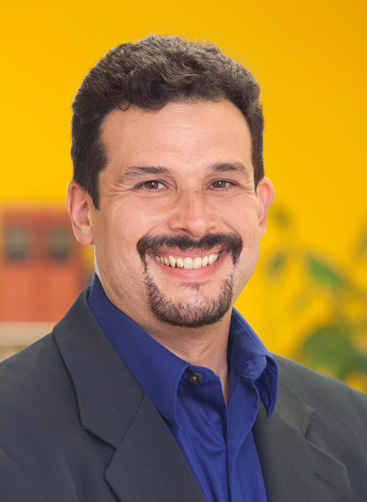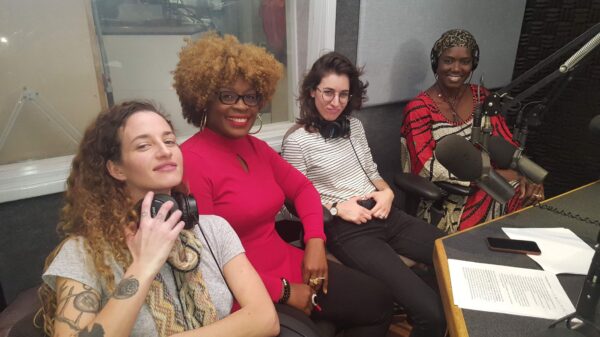Los Angeles County is home to the largest immigrant population in the US a majority of whom are professionals, students, and entrepreneurs. It is not surprising that the COVID 19 pandemic has heavily hit its 10million residents disproportionately on racial and economic lines. Student debt has become an even bigger crisis affecting students of color disproportionately from their white counterparts. At a zoom conference for ethnic media outlets hosted by Ethnic Media Services, County officials shared views about the unbearable impact of this growing student debt on the lives of students and their families.
Rep. Ro Khanna who represents California’s 17thCongressional District and sits on the House Committee On Agriculture, Armed Services, and Oversight and Reform spoke elaborately about the need for debt forgiveness and the necessity of wage increase.
Congressman Ro comes from a place of experience having taught economics at Stanford University, law at Santa Clara University, and American Juris prudence at SFSU and served in President Barack Obama’s administration as Deputy Assistant Secretary at the U.S.Department of Commerce. He shared that while debt forgiveness was imperative, it would however take political will to pull as Congress would need to have 60votes to pass a $10,000 debt forgiveness. As we all await action from the White House, the cost of going to college is at an all-time high and enrollment continues to dwindle.
 Kat Welbeck, a Civil Rights Counsel at the Student Borrower Protection Center and previously an Outreach and Engagement Specialist in the CFPB’s Office of Public Engagement And Community Liaison laid out the disparities that exist between white students and students of color. This she said gravely affects communities of color and unfortunately has been made worse by the COVID-19 pandemic casting a shadow over communities and hindering upward mobility for students.
Kat Welbeck, a Civil Rights Counsel at the Student Borrower Protection Center and previously an Outreach and Engagement Specialist in the CFPB’s Office of Public Engagement And Community Liaison laid out the disparities that exist between white students and students of color. This she said gravely affects communities of color and unfortunately has been made worse by the COVID-19 pandemic casting a shadow over communities and hindering upward mobility for students.
The racial wealth she stressed, is a factor in black and Latino borrowers who have less money and more student debt creating a vicious cycle and impending ability to build generational wealth. As such in the long run black and Latinos take more debt for college compared to their white counterparts. This is very concerning because the defaults and inability to pay that come as a result affect retirements and opportunities for wealth building.
 Joseph (Joe) Jaramillo, a Senior Attorney at Housing and Economic Rights Advocates (HERA) in Oakland, California is someone who previously litigated employment and consumer class actions at Goldstein, Borgen, Dardarian & Ho in Oakland, and Graham Hollis APC in San Diego. Joe explained that the racial implications of the system of financing are very important for blacks and Latinos as students of color are most affected by the pressure to finish college at all costs particularly those in for-profit colleges. Often enroll but few make it to the finish line or graduation. This Joe explained leads to massive debt predisposing students to the inequity we see in wealth growth. They can’t pay rent, buy a home, or get married later in life.
Joseph (Joe) Jaramillo, a Senior Attorney at Housing and Economic Rights Advocates (HERA) in Oakland, California is someone who previously litigated employment and consumer class actions at Goldstein, Borgen, Dardarian & Ho in Oakland, and Graham Hollis APC in San Diego. Joe explained that the racial implications of the system of financing are very important for blacks and Latinos as students of color are most affected by the pressure to finish college at all costs particularly those in for-profit colleges. Often enroll but few make it to the finish line or graduation. This Joe explained leads to massive debt predisposing students to the inequity we see in wealth growth. They can’t pay rent, buy a home, or get married later in life.
As a Staff Attorney at the Mexican American Legal Defense and Educational Fund (MALDEF)in San Francisco, he shared that this is a serious matter because the Federal government can collect defaulted loans by garnishing wages without going to court meanwhile, private student debt is treated like any other kind of debt which can equally be harmful i.e collections, wage garnishments, liens, etc.
The situation was made worse during the Trump administration and the pandemic which has brought more challenges as well for students of color taking online classes. Low-income students often do not have access to WIFI, which impedes the quality of their education and restricts the quality of interaction as well.
He pleaded that relief was imperative especially for students of color and low income. He shared information on how undocumented students can have access to resources at their website at www.heraca.org
Beware of scammers, he warned, who give false promises about how to get out of your debt. Undocumented students should be assured that all applications are done through the state of California maintaining their confidentiality. Requirements can also be found on the site. For out-of-state students, similar agency contacts are available online as well.
Meeting concluded with testimonies from students who shared the impact of student debt on their lives. Andrea Campo and Gabe Stewart are two students struggling to stay financially afloat with student loans. Andrea was denied job positions, as she says she is perceived as an at-risk employee, she is unable to get loans, credit cards, car loans, housing, etc, while Gabe shared that he is saddled with a $52000 debt which he is still struggling to get rid off.
See below a list of links and resources for your particular needs:
PRIVATE FINANCIAL AID
PRIVATE SCHOLARSHIPS:
There are many private scholarships available for students to help pay for college, and some may be available to undocumented students. Some are merit-based. Others are geared toward particular groups of people, such as military families (see https://studentaid.gov/understand-aid/types/military)Sources of information for scholarships:Department of Labor Free Scholarship search tool: https://www.careeronestop.org/toolkit/training/find-scholarships.aspx;College Board scholarship search: www.bigfuture.collegeboard.org/scholarship-search; FinAid.Org: http://www.finaid.org/scholarships
Financial aid office at a college or career school;High school or TRIO counselor;Your library’s reference section;Foundations, religious or community organizations, local businesses, or civic groups;Organizations (including professional associations) related to your field of interest;Ethnicity-based organizations; and Your employer or your parents’ employers
A scholarship will affect your other student aid because all your student aid added together can’t be more than the cost of attendance at your school.
PRIVATE STUDENT LOANS:
Private loans can be obtained from banks, lenders, and schools and may be available to undocumented students depending on the lender.Before taking out a private student loan, you should be aware of the consequences of falling behind on payments. If you aren’t able to make your payments, the debt will follow a path similar to other consumer debt (such as credit card debt).
Delinquency:Borrower is late on a payment.Charge-Off:After 120 or 180 days, lender reports debt as loss for accounting purposes. Borrower is still liable for debt.
Sale to Debt Buyer:Original lender sells debt to debt buyer for much less than the debt balance.
Lawsuit:Owner of the debt (original lender or debt buyer) sues the borrower.
Judgment:A court judgment can result in garnishment of your wages or a lien on your property.At any point in this timeline, you can always try to work out a settlement with the lender or debt buyer
The California Dream Act
The California Dream Act allows certain undocumented and nonresident students to receive state financial aid, including Cal Grants, Middle Class Scholarships and community college fee waivers (California Promise Grants).
Requirements:
Attend a California high school for 3 years or attain equivalent credits;Combination of 3 or more years at a California elementary or secondary school;Graduate from a California high school or pass the California High School Proficiency Exam (CHSPE) or get a GED; Enroll in an accredited and qualified California college or university; and, If applicable, fill out a non-resident exemption affidavit stating your intent to legalize immigration status as soon as possible. Your college’s Residency Deputy or the Admissions and Records office can provide information on how to complete your affidavit and let you know if supporting documentation is needed.
How to Apply for Aid:
If you are undocumented, submit a California Dream Act Application (instead of FAFSA) available at https://www.csac.ca.gov/post/resources-california-dream-act-application; Submit the California Promise Grant application for community college if you can’t apply with a CDAAhttps://www.cccapply.org/en/money/california-college-promise-grant; and Review the California Financial Aid checklist at https://www.csac.ca.gov/pod/financial-aid-checklist
Call the California Student Aid Commission at 888.224.7268 for help.
(Source: https://www.csac.ca.gov/how-apply) Attend a free Cash for College workshop. To locate your nearest Cash for College workshop, see www.cash4college.csac.ca.gov (Note these have been temporarily suspended pending the COVID-19 public health emergency)
Potential Sources of Financial Aid
Cal Grants–available for students with financial need who maintain satisfactory academic progress at University of California (UC), California State University, or Community College.
Middle Class Scholarships–provides undergraduate students, including students pursuing a teaching credential, with family incomes and assets up to $177,000 a scholarship to attend or UC or CSU campuses.
California Promise Grant–waives enrollment fee (tuition) at any California community college throughout the state. Based on financial need.
HERA is a not-for-profit legal services organization dedicated to economic justice. For additional information or to request assistance, please contact us at inquiries@heraca.org or (510) 271-8443 ext. 300









